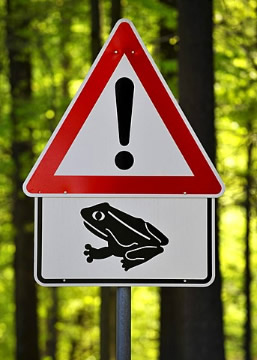Did you know that there are toads in one of the most famous rocks of Paris that you can see from the Champs Elysées. These toads do not refer to animals. They formed before complex life even existed. We are going back 600 million years ago.
Before we arrive at these old rocks, the pelotons races across the flatlands of the Paris Basin. They start from Saint Quentin-en-Yvelines and end up in the centre of Paris, as always. At the end of the stage, they will ride through the Place de la Concorde before ‘climbing’ the famous Champs Elysées with its granite pavement.
Last year we explained that the granite roadstones on the Champs-Elysées came all the way from Saudi Arabia .. A weird choice because granite is found abundantly in France. But these roadstones are not the only Arabian granites around the Champs-Elysées!
Obelisk
In the middle of the Place de la Concorde stands the Luxor Obelisk. It’s the oldest monument of Paris. Originally, the obelisk stood in front of the Amon temple in Luxor, Egypt with its twin that remained. It was offered to King Charles X in 1830 by Memed Ali Pasha, the vice king of Egypt. After a six long year trip, it stands in the middle of ‘Place de la Concorde’ since 1836. The obelisk is 23 meters high and weighs 222 tons. It rests on a 240 tons pedestal.
The obelisk is made from a pink granite variety called syenite. The rock’s name derives from Syene, the old name of the actual city of Aswwan in Egypt. The obelisk was carved nearby the city during the 13th century BC. Then it was placed in front of the Amon temple of Luxor 200 km away. In literature, Syene is often referred to as “monumental granite” as it was used for many statues or temple decorations.

This rock is mainly made of alkali feldspar minerals (the large pinkish ones) with minor quartz (colourless) and plagioclase (white). Syenite formed at a depth of many kilometers in the crust, were it could gently cool down giving time for crystals to grow large. This kind of rock generally forms during the late stage of subduction and orogenesis, when the crust is thick and the mantle wet, and both can melt to form large magma chambers where the syenites can form.
A very old piece of stone
These rocks of the obelisk come from a geological region called the Arabian-Nubian Shield which covers northeast Africa and Arabia. This formed at the end of the Neoproterozoic era, about 600 million years ago. A large mountain belt formed by collision of continents and subduction of oceans that led to the formation of the supercontinent Gondwana. Talk about ancient history.

Such pink syenite granites did not only form during mountain building in Arabia and Egypt. It is quite common to find this type of rock, also in France. A good example is the coast of Northern Brittany which we call ‘Côte de Granite Rose’. The pedestal of the obelisk is made of such a pink granite that was carved at l’île Melon quarry in northern Brittany. These granites were formed during the Variscan mountain building stage (link) ca. 320 Million years ago. A lot younger than the syenite of the obelisk.
Now tell me about toads
In the pink granite of the obelisk, you can see small patches of darker and finer-grained rock. This is basaltic rock which is also derived from magma but with a different composition. When continents collide, the crust is thickened and melts a bit. A magma forms that is rich in silicium oxide. When those magmas cool, they form rocks of the granite family including syenite. As the underlying mantle melts, that produces magma that is poor in silicium oxide and rich in iron and magnesium. After cooling it forms basalt. And when both melt at the same time, the two magmas may come together in the same magma chamber.
But these magma have very different physical properties. They especially have a very different viscosity. That is how syrupy they are: basalt magma is much more liquid than granite magma. As a result, they cannot mix properly. Often, droplets of basic magma (with dark colours) form enclaves in the granite magma (that generally gets a light colour).

These enclaves are so commonly found in granite that the quarrymen gave them a name: toads. Theses toads can be observed in the granite of the obelisk and in the granite of the pedestal that was chosen because it resembles Egyptian granite. During you next walk in town check the obelisk and the streets because you will probably see a lot of toads as they are common. For the riders, they form no problem. They’re not slippery and can’t jump in front of their wheels…..







